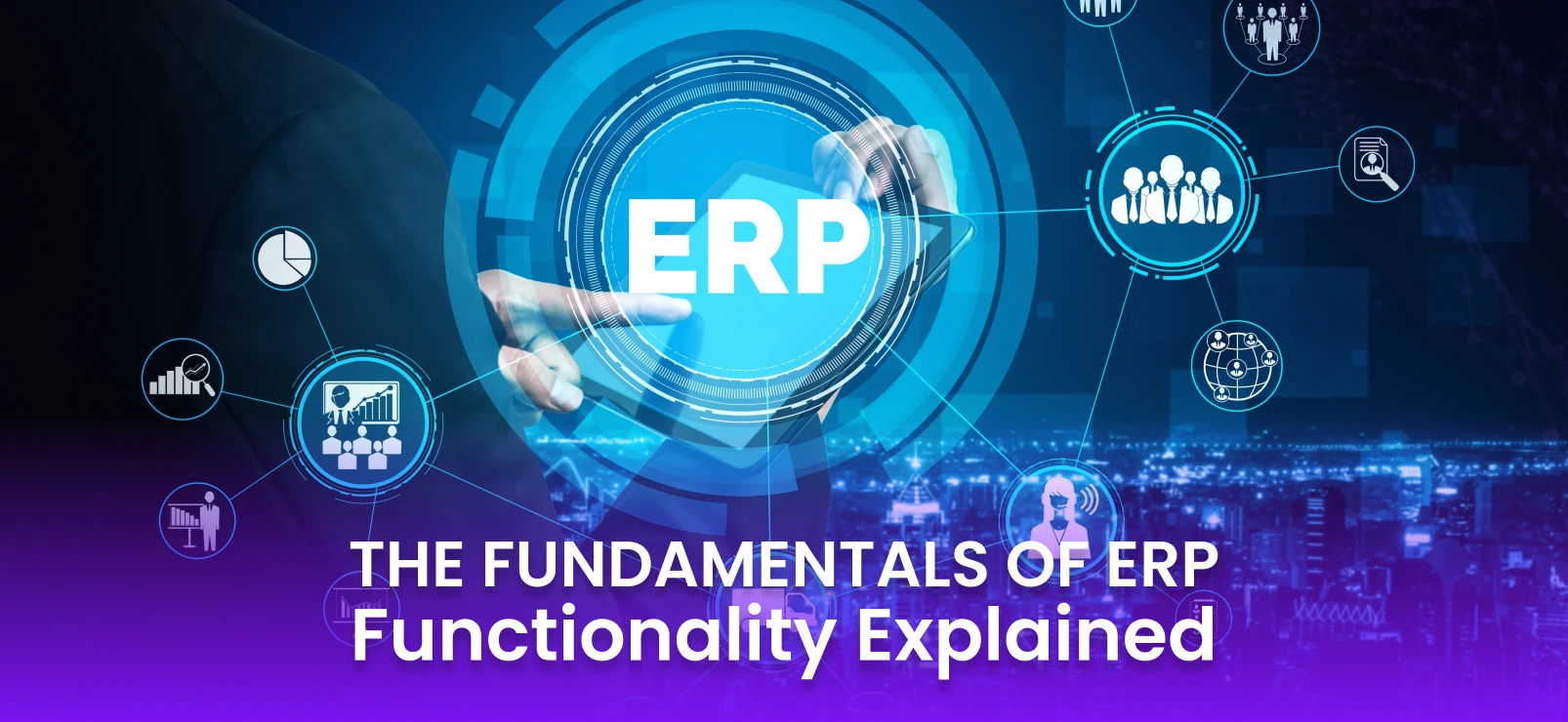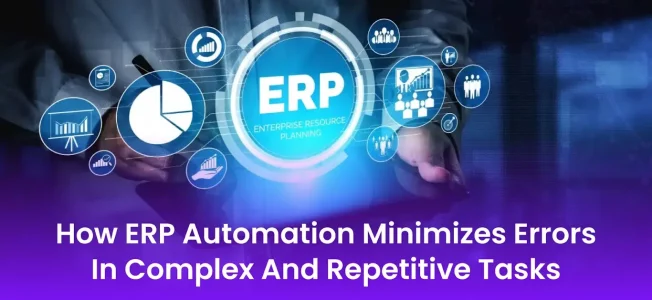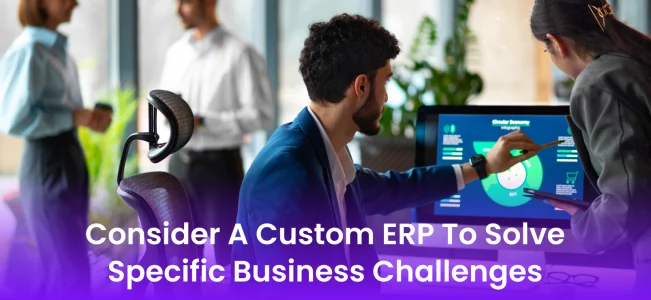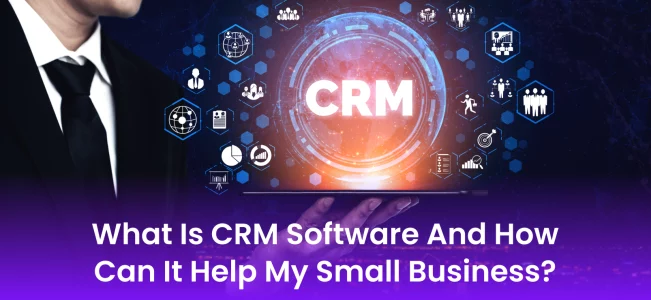The Fundamentals Of ERP Functionality Explained
Trying to make a finance team more effective and enhance business operations? Then ERP is what you need. ERP systems are designed to manage core business processes across departments like finance, HR, manufacturing, and supply chains. By integrating and automating financial and operational functions, they provide valuable data insights from sources such as the general ledger, accounts payable, receivable, payroll, and financial reporting.
Modern day ERP systems also assist with inventory, order, supply chain management, procurement, production, distribution, and fulfillment. While the specific features incorporated in an ERP software suite will differ by system, key functionalities exist in most versions of ERP software. Though, companies with human resource management (HRMS), customer relationship management (CRM), and e-commerce capabilities will see even greater benefits from ERPs.
Detailed information about the key ERP features clarifies why this software is important for businesses in today’s market. Here are several capabilities to consider when assessing ERP systems.
Let’s begin with the basics of ERP.
Understanding ERP: Foundation For Growth
ERP is a complete software program that unites and manages several business operations. It organizes and streamlines core activities, including accounting, human resources, supply chain management, production, and sales. By removing data silos and uniting several tasks into a single system ERP allows smooth departmental communication and cooperation. The centralized database and real-time transparency offered by an ERP system enhance decision-making, resource optimization, and productivity. It is crucial for process integration, operational efficiency, and driving business growth. For business growth, implementation of an ERP system provides numerous benefits. The benefits consist of maximized operational effectiveness, simplified business processes, enhanced collaboration, real-time visibility, data-driven decision-making, lesser costs, optimized resource allocation, and the capability to scale and adapt to varying business demands.
Market Size of ERP
Globally, the enterprise resource planning (ERP) software market was estimated at USD 71.41 billion in 2023. It is projected to grow from USD 81.15 billion in 2024 to USD 238.79 billion by 2032, displaying a CAGR of 14.4% during the forecast period.
Types of ERP Systems
ERP systems to address all features of a business and enhance business processes, such as accounting, real-time financial reporting, forecasting and other processes, usually come in three different deployment options:
On-Premises ERP Systems
The on-premises ERP system is a software that is installed on the organization’s own servers and computer equipment. It is a licensed system that can be tailored and upgraded and is usually maintained by the organization’s IT team onsite to simplify the business workflow.
Cloud-Based ERP Systems
The on-premises ERP system is installed on an organization’s own servers and computer equipment. It is a licensed system that can be adapted and upgraded and is normally maintained by the organization’s IT team onsite to simplify the business workflow.
Hybrid ERP Systems
The hybrid ERP system groups elements from both on-premises and cloud ERP systems and infrastructure. This model is for organizations with precise requirements or stern regulatory requirements. An organization can have the advantage of on-premises ERP hardware installed for all or some of its data while being capable of scaling up in the cloud. The hybrid solution will be a blend of public and private cloud services, relying on what the organization requires.
How does ERP work?
The fundamental but potential concept behind ERP software is integration. By combining various business operations, ERP software creates a single, integrated system.
Need an ERP Solution? Our Developers Have You Covered!
Contact CERP Suite Now!Modern ERP offers
Centralized Database
All data is kept in one place, removing silos and ensuring everyone works with similar up-to-date information.
Real-Time Updates
As data is entered or reformed in one part of the system, it’s promptly reflected throughout all relevant departments.
Process Automation
Routine tasks are automated, decreasing manual errors and providing staff the time for more strategic work.
This interconnected approach is particularly beneficial in manufacturing, where complex supply chains and production processes demand precision and coordination.
Essential Functions of an ERP System
Here are the key functions of ERP that collectively work to help businesses by streamlining operations, developing efficiency, enhancing decision-making, and driving growth.
Professional Services Management
For the professional services industry, ERP helps make company plans and run projects. By allowing to keep track of project positions it allows managers to approve expenses and timesheets. Additionally, it helps manage human and financial resources, making it easier for teams to work collaboratively by placing all linked documents on one platform.
Manufacturing Management
An ERP manufacturing module simplifies the production process by offering various tools such as production planning and scheduling, material needs planning, and shop floor management. This optimizes accessible resources and reduces wastage.
ERP offers tools for quality control and inspection during the production process, making sure that the goods produced meet the needs and are of high quality. This allows manufacturers to supervise the production process and adjust to enhance productivity and reduce production costs.
Customer Relationship Management (CRM)
Another key ERP function is managing your customers and leads. An ERP with CRM stores customer data, offering valuable insights that drive better sales and marketing strategies, aiding your company grow and succeed.
With ERP, you can track customer purchasing conduct and use this data to regulate which goods are underachieving, enabling you to advance products or emphasise efforts on more popular items.
It also highlights opportunities for cross-selling and upselling. The ability to track sales team interactions with clients, this module improves engagement, reduces redundancy, minimizes customer frustration, and emphasize on high-potential accounts for sales closings.
Financial Management
The ERP system must offer a complete range of financial capabilities for handling and reporting financial transactions. Its accounting feature evaluates and tracks financial information, such as budgets, expenses, receivables, and payables.
Analyzing financial data shows spending patterns, providing insights into earnings and identifying cost-cutting opportunities. ERP automation, by integrating sales, customer service, and distribution, boosts productivity and strengthens your financial position, improving the bottom line.
Warehouse Management
ERP’s warehouse management module through operations optimization results in a quicker return on investment (ROI). It guides warehouse managers in organizing their workforce according to how many orders they assume they will get. Also, it allows diverse picking strategies such as batch picking, wave picking, and zone picking.
Supply Chain Management
ERP manages every aspect of the supply chain, including order management, production planning, inventory management, and procurement. By gathering real-time data, your ERP’s supply chain management module optimizes production and distribution to design and build a robust supply chain.
It enables predictive analytics, which helps in demand forecasting. You can utilize historical and real-time data to ensure that production always meets demand while avoiding overstocking. Overstocking advances inventory costs or understocking, resulting in poor customer experiences and overlooked possibilities.
Sales and Marketing Management
ERP has a number of functions that simplify workflows in sales and marketing management. A few examples are:
- Automating tracking marketing expenses
- Setting goals for the marketing team
- Monitoring abandoned orders
- Generating reports on marketing campaigns across a multitude of digital platforms
- Analyzing KPIs
- Scrutinizing sales patterns
- Linking data to aggregated numbers
- Making future projections
ERP incorporates strong client segmentation tools and can automate sending emails relying on campaign parameters, assuring that consumers only get relatable information.
Human Resource Management
Employee management should be your topmost priority. When staff members are supported and empowered, a business flourishes. ERP administers and automates Human Resource (HR) tasks, including payroll, benefits administration, onboarding, personnel records, timekeeping, and training.
It accounts for not just hours operated but also paid time off and sick days. ERP allows syncing your accounting system and a human resources module facilitating you to make automated payments to employee bank accounts and manage compensation forms with less effort.
Business Intelligence and Reporting
The ERP solution must have tools such as dashboards, reports, and data visualization to analyze and report on business data. An AI-powered ERP utilizes Robotic Process Automation (RPA) to gather, analyze, and automate business intelligence data to provide actionable insights and assist you in making data-supported decisions.
Conclusion
ERP systems offer a wide range of innovative tools that integrate and simplify several key business functions, enhancing operational efficiency, decision-making, and overall business expansion. With data centralization, process automation and real-time analytics, ERP solutions enable businesses to optimize resources, improve collaboration, and scale. In today’s competitive business environment, ERP has become crucial for achieving business success, either through supply chain optimization, financial management, or customer relationship improvement. To experience the complete benefits of ERP, connect with CERPSuite, a potential ERP module designed to simplify your operations and accelerate growth.












